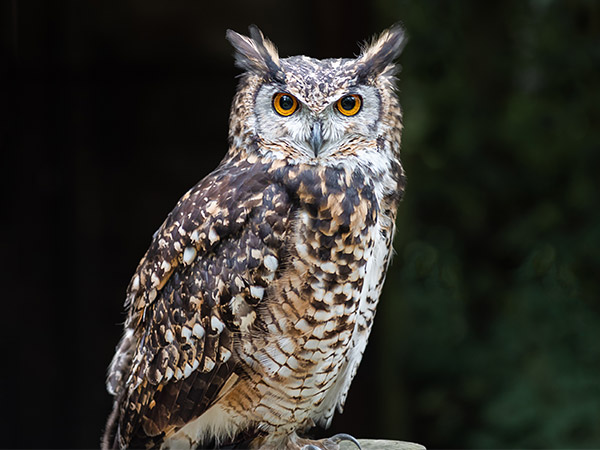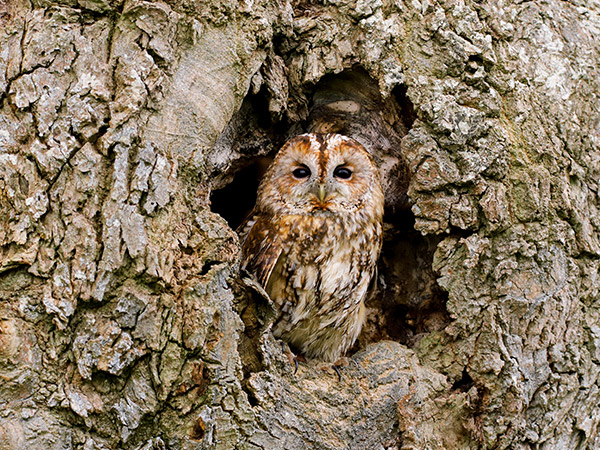Who are the nocturnal raptors?
They are the “Lords of the night”: owls, little owls, scops owls, tawny owls and barn owls and all other birds of prey which, like every species belonging to this group, have a hooked beak and strong and sharp claws for catching and killing the prey. Being active from the dusk for all the night, the nocturnal raptors differ from the diurnal ones for some distinctive skills that allow them to hear the prey moving in full darkness and to capture them in a silent way. What are they?
Sight
Exceptionally developed in all raptors. In the diurnal ones (ex. golden eagle or peregrine falcon) it allows a greater definition of the images, while in the nocturnal it allows an excellent view in the darkness. The particularly large eyes are able to intensify at the maximum the low available light. An owl, for example, will be able to see during its nocturnal movements, without collide with obstacles, but will not have a perfectly clear vision of the small prey that is moving in the undergrowth. For this, it has another highly developed sense…

Hearing
It’s the most developed sense, because night hunting is basically due to the location of the noises emitted by the prey. For this reason, the nocturnal raptors have some anatomical characteristics, such as the presence of asymmetrical auricular cavities, placed one higher than the other. In this way, the sounds arrive first in one ear and then to the other, giving a more exact information about their origin. They also have a structure of the face that works as an “amplification dish”.

Plumage
The feathers are fringed and covered with a kind of velvet, which makes them particularly soft and give silence to the flight of these birds. In this way, they can catch their prey counting on the element of surprise. The plumage also has colours that allow the nocturnal raptors to “blend” perfectly with the surrounding environment. A tawny owl will therefore be able to study its prey for some time without the risk of being discovered.
Nocturnal raptors and wild garden
Some of the species belonging to the nocturnal raptors, populate our cities and our countries. It is not uncommon, therefore, to see some of them close to our homes and gardens too.
The species which mainly enjoy the man-made artefacts, are the owl and the barn owl. The first one, uses the cavities of the trees to build its nest, but also nidifies in the roofs of the houses or in the cracks of the dry walls. The second one, hanging around the open country areas looking for mice, moles and voles, utilizes also ceilings and beams of the buildings, especially if old and abandoned, as shelter and a base for its own nest.
Little owls and barn owls do not despise the nest boxes offered by man, as long as they are realized and placed following some specific needs. Providing an artificial shelter for these magnificent birds, as well as an opportunity to observe them, is an important aid to species, facing problems such as the loss of habitat and suitable sites for nesting.